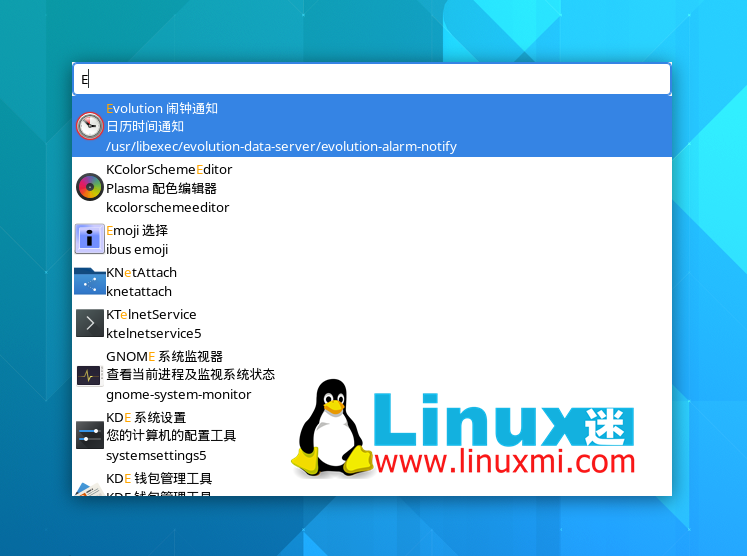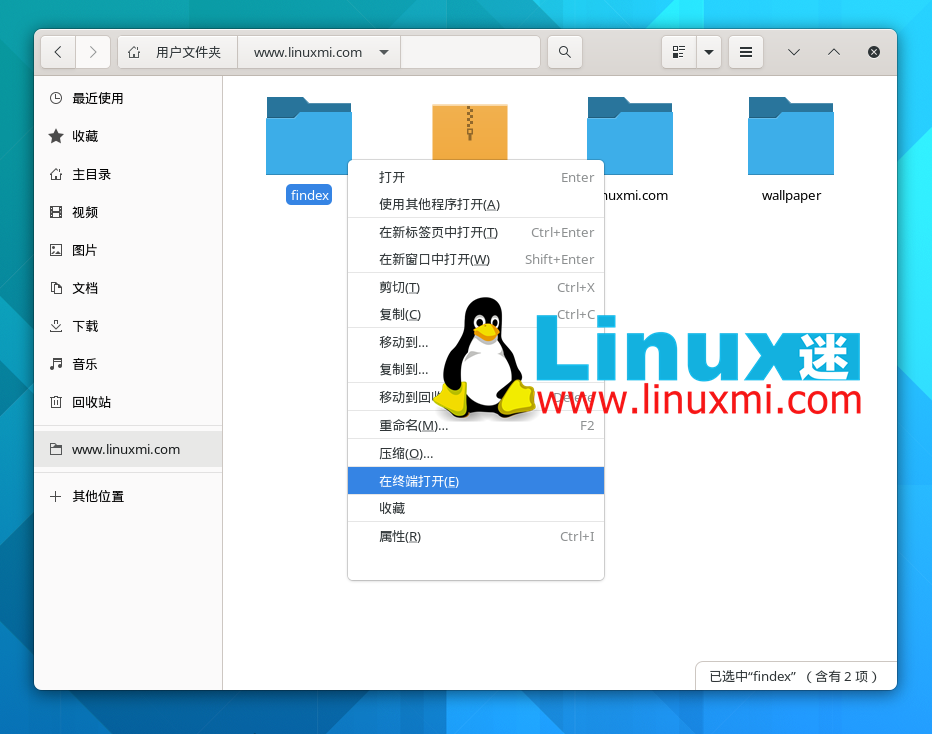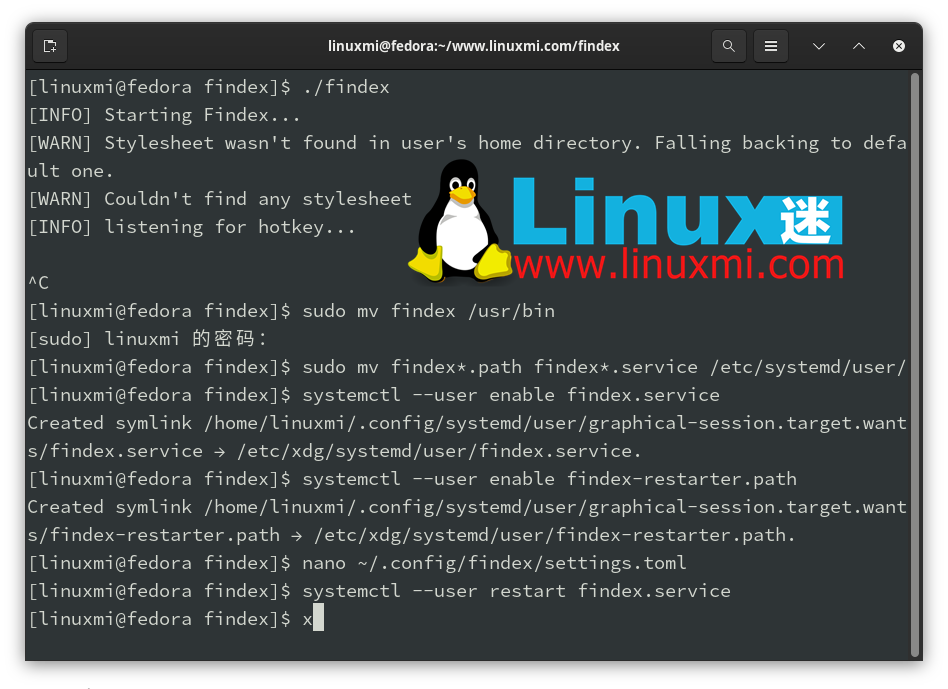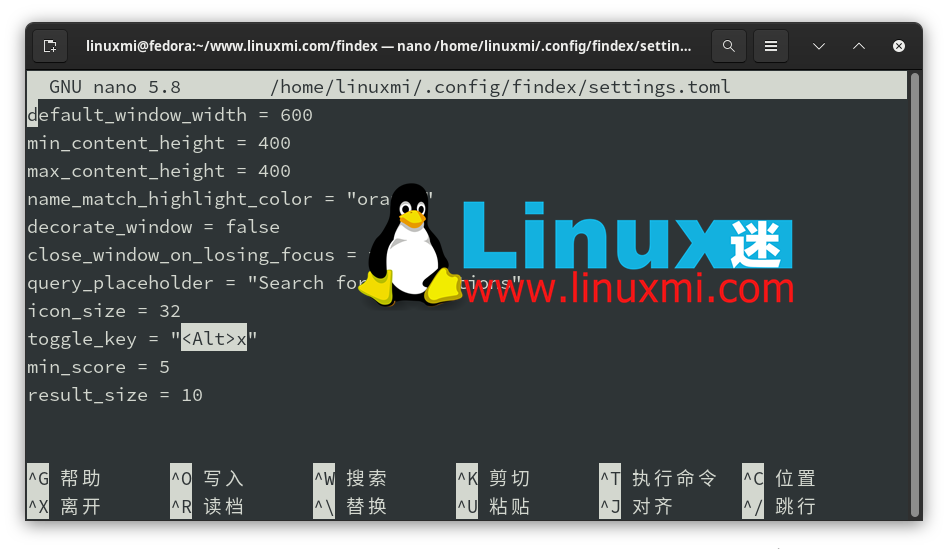Linux search startup tool Findex
Looking for an alternative application launch tool for your Linux? Then Findex is a product with a highly customizable interface and fast performance.

The application runs silently in the background. After pressing the shortcut key, a search box will pop up in the center of the screen, allowing you to quickly search and open the desired application.
This tool is very fast because it focuses on performance. It supports fuzzy search and allows configuring the following:
Search window width.
Minimize and maximize window height.
The color to highlight matching content.
Icon size, result size and shortcut keys
How to get Findex
The current 0.6.0 version does not work with Wayland sessions, but it is said that it will be restored in a future version. This means that until now, Ubuntu and Fedora required switching from the login screen to "Ubuntu on Xorg" or "Gnome on Xorg" to use the tool.
1. First, download the source code package from the GitHub release page:
Download FINDEX (TAR.GZ)
2. Then unzip it in the file manager. Right-click the resulting folder and select "Open in Terminal" to open the folder as a working directory in the terminal.

\3. Finally, run the command in the terminal to start it:
./findex

Run it for the first time to verify it works!
To verify that it works, just press Shift Space on your keyboard. The search box should prompt to allow typing to search for your application.
4. To make Findex run automatically at startup, run the following commands one by one in the same terminal window:
Move the executable file to the system path through the command:
sudo mv findex /usr/bin
Move the service files into the systemd folder:
sudo mv findex*.path findex*.service /etc/systemd/user/
Finally, enable the service:
systemctl --user enable findex.service systemctl --user enable findex-restarter.path
Copy to PATH and make it start automatically.
\5. To configure keyboard shortcuts and search appearance, open a terminal and run the command:
gedit ~/.config/findex/settings.toml
Replace gedit with your system text editor. After saving the changes, you need to restart the service by running the command: systemctl –user restart findex.service.

uninstall
To disable the service, use the command:
systemctl --user disable findex.service systemctl --user disable findex-restarter.path
Then delete the executable file and service file:
sudo rm /usr/bin/findex /etc/systemd/user/findex*
The above is the detailed content of Linux search startup tool Findex. For more information, please follow other related articles on the PHP Chinese website!

Hot AI Tools

Undresser.AI Undress
AI-powered app for creating realistic nude photos

AI Clothes Remover
Online AI tool for removing clothes from photos.

Undress AI Tool
Undress images for free

Clothoff.io
AI clothes remover

Video Face Swap
Swap faces in any video effortlessly with our completely free AI face swap tool!

Hot Article

Hot Tools

Notepad++7.3.1
Easy-to-use and free code editor

SublimeText3 Chinese version
Chinese version, very easy to use

Zend Studio 13.0.1
Powerful PHP integrated development environment

Dreamweaver CS6
Visual web development tools

SublimeText3 Mac version
God-level code editing software (SublimeText3)

Hot Topics
 1663
1663
 14
14
 1420
1420
 52
52
 1313
1313
 25
25
 1266
1266
 29
29
 1239
1239
 24
24
 Linux Architecture: Unveiling the 5 Basic Components
Apr 20, 2025 am 12:04 AM
Linux Architecture: Unveiling the 5 Basic Components
Apr 20, 2025 am 12:04 AM
The five basic components of the Linux system are: 1. Kernel, 2. System library, 3. System utilities, 4. Graphical user interface, 5. Applications. The kernel manages hardware resources, the system library provides precompiled functions, system utilities are used for system management, the GUI provides visual interaction, and applications use these components to implement functions.
 How to check the warehouse address of git
Apr 17, 2025 pm 01:54 PM
How to check the warehouse address of git
Apr 17, 2025 pm 01:54 PM
To view the Git repository address, perform the following steps: 1. Open the command line and navigate to the repository directory; 2. Run the "git remote -v" command; 3. View the repository name in the output and its corresponding address.
 What is the main purpose of Linux?
Apr 16, 2025 am 12:19 AM
What is the main purpose of Linux?
Apr 16, 2025 am 12:19 AM
The main uses of Linux include: 1. Server operating system, 2. Embedded system, 3. Desktop operating system, 4. Development and testing environment. Linux excels in these areas, providing stability, security and efficient development tools.
 How to run java code in notepad
Apr 16, 2025 pm 07:39 PM
How to run java code in notepad
Apr 16, 2025 pm 07:39 PM
Although Notepad cannot run Java code directly, it can be achieved by using other tools: using the command line compiler (javac) to generate a bytecode file (filename.class). Use the Java interpreter (java) to interpret bytecode, execute the code, and output the result.
 How to run sublime after writing the code
Apr 16, 2025 am 08:51 AM
How to run sublime after writing the code
Apr 16, 2025 am 08:51 AM
There are six ways to run code in Sublime: through hotkeys, menus, build systems, command lines, set default build systems, and custom build commands, and run individual files/projects by right-clicking on projects/files. The build system availability depends on the installation of Sublime Text.
 laravel installation code
Apr 18, 2025 pm 12:30 PM
laravel installation code
Apr 18, 2025 pm 12:30 PM
To install Laravel, follow these steps in sequence: Install Composer (for macOS/Linux and Windows) Install Laravel Installer Create a new project Start Service Access Application (URL: http://127.0.0.1:8000) Set up the database connection (if required)
 git software installation
Apr 17, 2025 am 11:57 AM
git software installation
Apr 17, 2025 am 11:57 AM
Installing Git software includes the following steps: Download the installation package and run the installation package to verify the installation configuration Git installation Git Bash (Windows only)
 How to use VSCode
Apr 15, 2025 pm 11:21 PM
How to use VSCode
Apr 15, 2025 pm 11:21 PM
Visual Studio Code (VSCode) is a cross-platform, open source and free code editor developed by Microsoft. It is known for its lightweight, scalability and support for a wide range of programming languages. To install VSCode, please visit the official website to download and run the installer. When using VSCode, you can create new projects, edit code, debug code, navigate projects, expand VSCode, and manage settings. VSCode is available for Windows, macOS, and Linux, supports multiple programming languages and provides various extensions through Marketplace. Its advantages include lightweight, scalability, extensive language support, rich features and version




